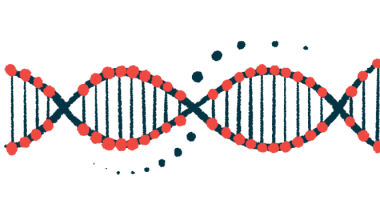Rare Friedreich’s ataxia mutations influence its clinical presentation
Some variants with more frataxin tied to less severe disease

Friedreich’s ataxia (FA) patients with less common types of disease-causing mutations in the FXN gene may have a distinct clinical presentation from patients with a more standard genetic profile, research suggests.
A certain group of these mutations associated with higher production of frataxin — the protein lacking in FA — were linked to generally less severe disease and minimal heart involvement, while others associated with very little to no frataxin production led to a more standard, but faster progressing disease.
“Future research could further elucidate how impairments in frataxin function or functions leads to disease, with broader applications to restoring that function therapeutically in [FA] patients,” the researchers wrote in “Phenotypic variation of FXN compound heterozygotes in a Friedreich ataxia cohort,” which was published in the Annals of Clinical and Translational Neurology.
In FA, mutations in FXN drive a deficiency in frataxin, leading to a loss of balance and coordination, the hallmark symptom of ataxia, along with features like heart disease, speech problems, skeletal issues, and diabetes. In general, it’s thought that the degree of frataxin deficiency influences how severe the disease will be.
For symptoms to manifest, both copies of a person’s FXN gene must be affected, one from the mother and the other from the father. In most cases, a type of mutation called a GAA repeat expansion is seen in both copies, called a homozygous mutation.
With this mutation, three DNA building blocks — a guanine (G) and two adenines (AA) — are excessively repeated at a certain spot in the gene. The longer the repeat, the more severe the frataxin deficiency and associated disease.
In a minority of patients, however, a GAA repeat expansion is seen on one copy of the gene, but a different type of mutation occurs on the other, which is known as being compound heterozygous.
Mutations and clinical presentation in Friedreich’s ataxia
More than 60 different types of mutations have been described in this group, each leading to varying effects on frataxin production. Some lead to essentially no functional frataxin, while others have a partially depleting effect.
The clinical picture of compound heterozygous FA and the effects of these particular mutation types is not as well worked out as it is for homozygous patients, leading researchers to compare the clinical features of a group of compound heterozygous and homozygous patients who were included in the Friedreich Ataxia Clinical Outcome Measures Study (FA-COMS).
Of 409 patients, 358 (87.5%) were homozygous for the GAA repeat expansion, 28 (6.8%) were compound heterozygous with partial frataxin function mutations, and 23 (5.6%) were compound heterozygous with minimal/no function mutations.
A number of differences were observed between these groups regarding their characteristics and features. On average, those with partial function mutations were older, had a later disease onset, and less severe disease relative to those with minimal/no function mutations.
Generally speaking, partial function compound heterozygous mutations were associated with a relative preservation of neurological function compared to the standard FA presentation. Most of these patients had retained upper limb and bulbar function, that is, of the face, mouth, and throat.
In contrast, patients in the minimal/no function group had a typical FA presentation that looked similar to homozygous patients, but with more severe progression. Having such mutations was a significant predictor of dysarthria, or speech difficulties.
Both compound heterozygous groups were associated with a lower likelihood of heart disease compared to homozygous patients, although the odds were lowest in the partial function group.
Partial function mutation status was also associated with a greater likelihood of having normal heart disease biomarker levels and normal findings on tests of the heart’s activity.
One important takeaway from the study emerges from the findings — “the relationship between frataxin levels versus frataxin dysfunction is not always a simple correlation.”
That’s most apparent in partial function patients, who had lower frataxin levels but relatively less severe disease presentation than homozygous patients, even at a higher disease burden, which is a measure that considers expected severity of the mutation and disease duration.
Still, clinical measures used to monitor disease severity might not capture all aspects of disease, the researchers noted. For example, partial function mutations might be associated with a greater burden of visual involvement, but that’s not captured on current scales.
Within the partial function group, there was variation in clinical presentation, especially as it related to features like visual involvement and diabetes, said the researchers, who also emphasized that in reality, these widely varying mutations might not fit neatly into the two categories. Still, with small numbers of patients, it was hard to interpret the significance of clinical differences seen between specific mutation types. It remains to be seen whether some of these mutations have “reliably distinguishing features,” they said.








